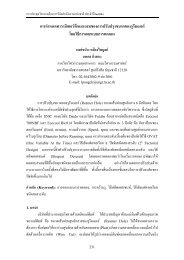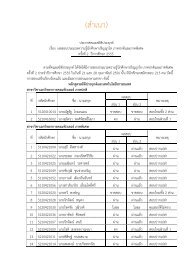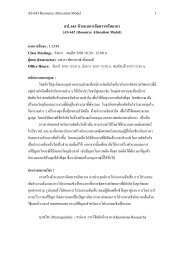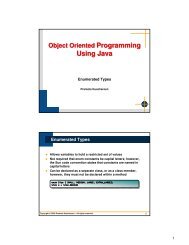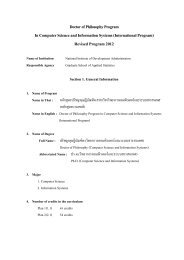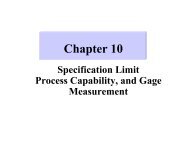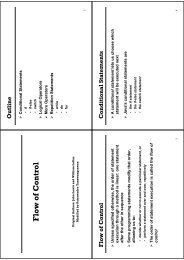ดาวน์โหลด All Proceeding - AS Nida
ดาวน์โหลด All Proceeding - AS Nida
ดาวน์โหลด All Proceeding - AS Nida
Create successful ePaper yourself
Turn your PDF publications into a flip-book with our unique Google optimized e-Paper software.
Saving Cost<br />
Saving Cost<br />
Fig3. d versus discount for Model A<br />
Fig4. d versus discount for Model B<br />
5. Conclusion<br />
The optimal order quantity and backorder are investigated<br />
for model of defective items under one-time-only discount and pure<br />
backordering. From numerical examples, the results show that 1) the<br />
firm should always order when discount occur at the ordering point 2)<br />
when discount is offered after the screening process and inventory is<br />
positive, the firm should order when discount is large enough 3) when<br />
unit discount is increases the firm should order more and increase the<br />
amount of backorder 4) when purchasing cost is decreases firm should<br />
order more and increase the amount of backorder.<br />
Appendix A<br />
To prove Theorem 1, we first construct saving cost that is<br />
( a) a a<br />
D = NTcn − NTcs.<br />
(9)<br />
It is easy to check that saving cost is convex. Next step is to<br />
find optimal Qs and Bs by take first derivative of D (a) with respect to Qs and Bs then set them equal to zero, we obtain<br />
d<br />
d<br />
222<br />
( a)<br />
∂D<br />
Tc<br />
pQ<br />
= −[( c− d + s) + 2( c−d) h<br />
*<br />
∂Qs<br />
Qn<br />
x<br />
*<br />
Qs(1 − p) −Bn<br />
+ ( c−d) h(1 − p)(<br />
)] = 0,<br />
D<br />
and<br />
∂D<br />
+<br />
∂B<br />
x<br />
( a)<br />
s<br />
*<br />
Tcn p( In = − [( c+ s) + 2ch<br />
*<br />
Qn<br />
Bs)<br />
*<br />
In(1 − p) − pBs Bs<br />
− chp( ) + ( c − d) b ] = 0.<br />
D D<br />
Solve for Q s and B s we get (3) and (4) respectively.<br />
s<br />
(10)<br />
(11)<br />
References<br />
[1] M.K. Salameh and M.Y. Jaber, “Economic production quantity<br />
model for items with imperfect quality”, Int. J. of Production<br />
Economics 64, 59-64, 2000.<br />
[2] B. Maddah and M.Y. Jaber, “Economic order quantity for items<br />
with imperfect quality: revisited”, Int. J. of Production Economics<br />
112 (2),808–815,2008.<br />
[3] M. Khan et al., “A review of the extensions of a modified EOQ<br />
model for imperfect quantity items”, Int. J. of Production<br />
Economics 132,1–12,2010.<br />
[4] H.M. Wee et al., “Optimal inventory model for items with<br />
imperfect quality and shortage backordering”, Omega 35, 7-11,<br />
2007.<br />
[5] H.-C. Chang and C.-H. Ho, “Exact closed-form solutions for<br />
“optimal inventory model for items with imperfect quality and<br />
shortage backordering””, Omega 38, 233-37, 2010.<br />
[6] W.-K. Hsu and H.-F. Yu, “EOQ model for imperfective items<br />
under a one-time-only discount”, Omega 37, 1018-26, 2009.




